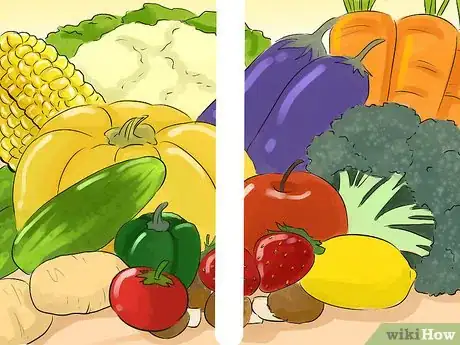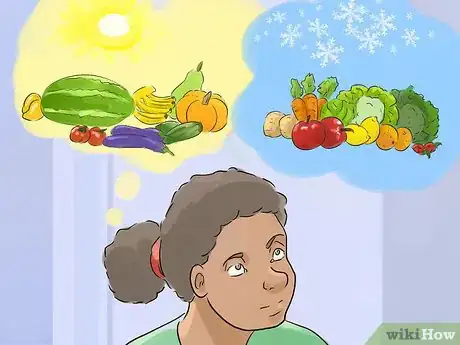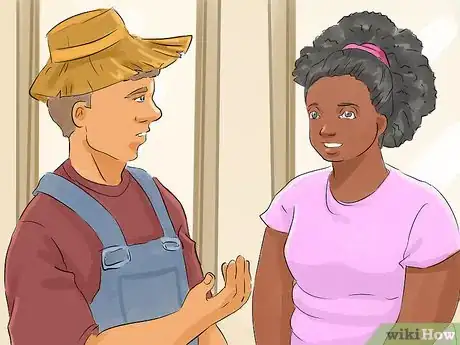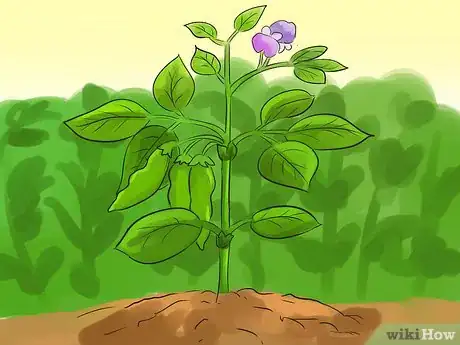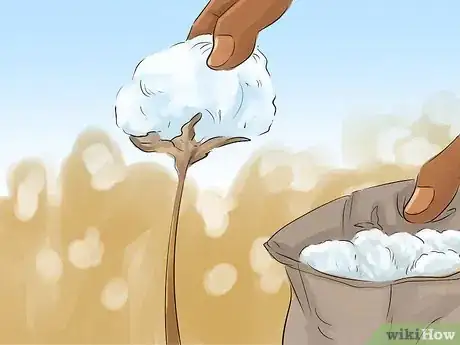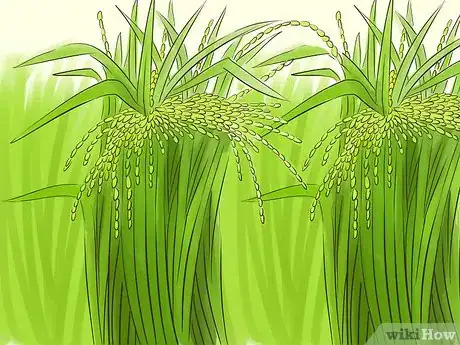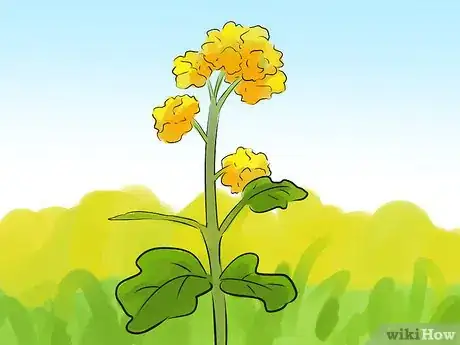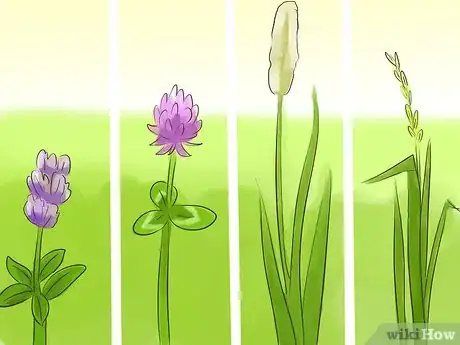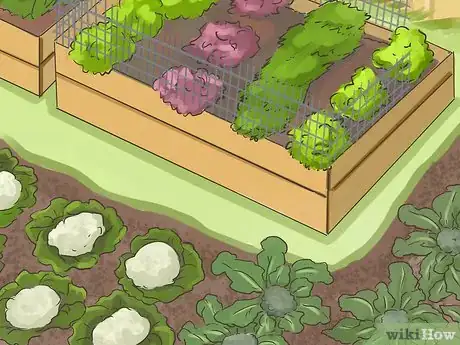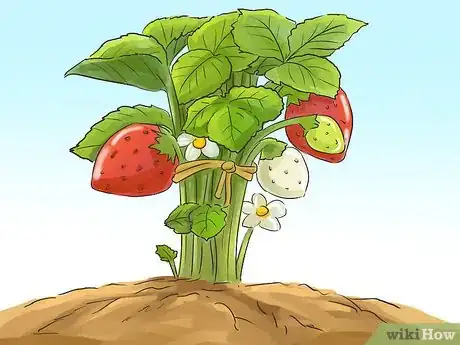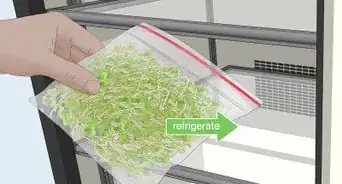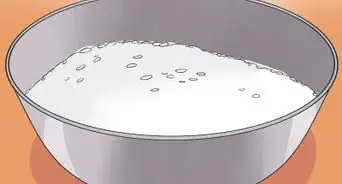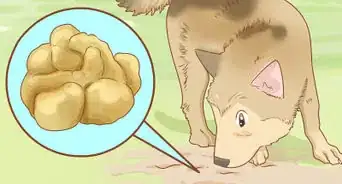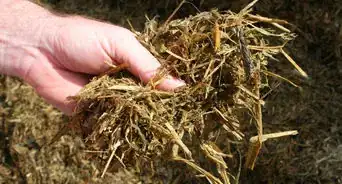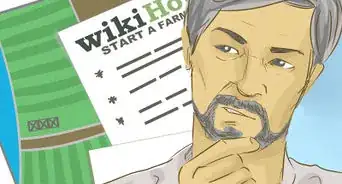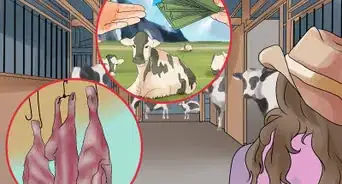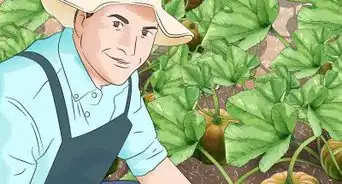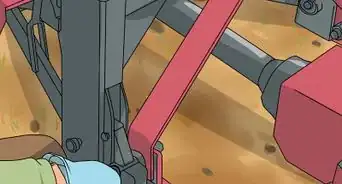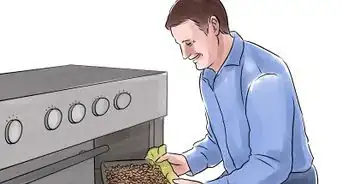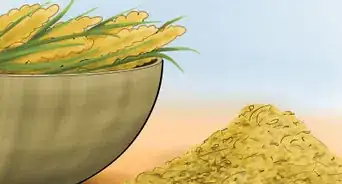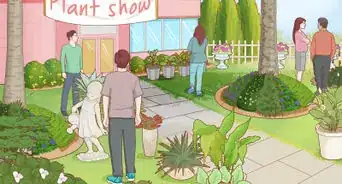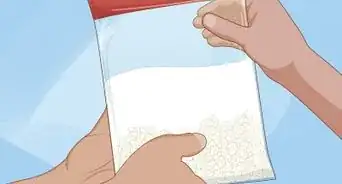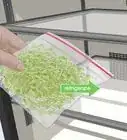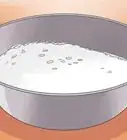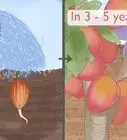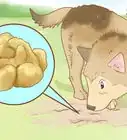This article was co-authored by wikiHow Staff. Our trained team of editors and researchers validate articles for accuracy and comprehensiveness. wikiHow's Content Management Team carefully monitors the work from our editorial staff to ensure that each article is backed by trusted research and meets our high quality standards.
There are 12 references cited in this article, which can be found at the bottom of the page.
This article has been viewed 286,552 times.
Learn more...
Farm crops often bear little resemblance to the produce you buy in the store. For one thing, the main crops grown on major farms are commodity crops like grains and cotton. You won't see fields of tomatoes on most big farms, for instance. There are ways to narrow down and identify the crops, and the best way to get an idea is to learn what is typically grown in your area.
Steps
Learning the Major Crops in Your Area
-
1Check your government's main agriculture website to find out what's grown. Most governments publicize the major crops in the area. For instance, most states have websites about the major crops grown in the state. Knowing what to expect in your area will help you identify the main crops.[1]
- For example, in Idaho, potatoes, hay, sugar beets, barley, wheat, oilseeds, legumes, and beans are all prominent.
- You can look up your state's main crops at https://quickstats.nass.usda.gov.
-
2Figure out the difference between "commodity crops" and "specialty crops." When driving by farmland, you're most likely to see "commodity crops," which are non-perishable crops raised for processed foods, animal food, and clothing. "Specialty crops," on the other hand, are fruit and vegetable crops, and they actually make up a small percentage of the major farmlands in the United States.
- In the United States, the main crops you'll see are corn, cotton, wheat, soy, and rice, as these are subsidized the heaviest.[2]
- Therefore, you're much more likely to see a field of corn, cotton, wheat, soybeans, or rice than fields of things like tomatoes, onions, carrots, potatoes, and so on.
Advertisement -
3Factor in the time of year to narrow down your choices. Most crops are grown from spring to late fall, but different crops grow better at different times of the year. For instance, some foraging grasses like Timothy grass grow better in cool weather, so you're more likely to see them in spring and fall.[3]
- Other crops prefer the heat of summer and a few can even be grown into winter. For example, winter wheat can be planted in the fall and harvested mid-summer.
-
4Talk to local farmers at your farmer's market. Farmers are great sources of information! If you can take a picture of the crop in question and show it to a local farmer, you're sure to get an answer to what kind of crop it is.
- Most farmers are more than happy to talk about the kinds of crops that are grown in the area.
Looking for the Characteristics of Commodity Crops
-
1Watch for a thick central stem, tassels, and wavy leaves to identify corn. Corn is a tall plant, often growing to 5 to 10 feet (1.5 to 3.0 m). The thin, wavy leaves sit opposite each other on the stem and they alternate sides by a quarter turn going up the plant. When the corn is about halfway to maturity, you'll see a dollop of silky, pale hair growing on top of each cob.[4]
- You won't see the grain of the corn until you husk it. Rather, you'll just see long ears covered by green husks and topped with yellow silk.
-
2Pay attention to a low, deep green plant to identify soybeans. These plants reach about 2 feet (0.61 m) at maturity, though they look like round, small bushes early in the growing process. Soybeans, cotton, and peanuts can appear similar from a distance. However, soybeans tend to be a deeper green; the undersides of the leaves are a silvery green.[5]
- In late summer, you may see small white or purple flowers on the plants.
- Typically, these plants grow from May to October.[6]
- These plants are left to mature in the field. The leaves will brown and fall off before the pods are ready to be harvested in October.
-
3Notice a grassy plant to pick out wheat. This plant typically gets to be about 3 feet (0.91 m) tall. It is a slender plant with thin, narrow leaves. At the top of the leaves, you'll see a spiked head, which is where the grain grows.[7]
- Often, this plant is grown over the winter, starting in the fall and ending in mid-summer. However, you'll also see summer wheats that are planted in spring and harvested in the fall.
- The leaves of this plant are thinner than barley, which has a similar look.
- This plant starts out green and grows a white spiked head. However, it turns brown by the time it is harvested.
-
4Look for white, pink, and/or red flowers to identify cotton. Cotton grows in a similar way to soybeans. However, as it grows, it will start to produce flowers from the main stem. These flowers will produce the white round "bolls," which are harvested for the fiber.[8]
- This plant starts out small and bushy with tri-point leaves. It's a lighter green than soybeans.
- When it is ready to be harvested, the plant will be completely brown and covered in the white bolls. It tends to get about 2 feet (0.61 m) tall.
-
5Check for a flooded field and tall, grassy stalks to pick out rice. This plant reaches a height of about 3 feet (0.91 m). Through much of its growth, the field will be flooded to a depth of 3 to 5 inches (7.6 to 12.7 cm), so it's easy to pick out. The leaves tend to be thicker than wheat, and it grows yellow flowers before producing long strands of rice grain at the top of the leaves.[9]
- When it reaches maturity, the heads will turn brownish instead of green. The farmer will drain the field to harvest the grain.
Identifying Other Crops
-
1Pick out other grain crops by their heads. Many grain crops grow in a similar fashion to wheat with long, grassy stems. However, they tend to differ in the way the grain is grown. For instance, oat plants have a loose branching effect at the top when they produce grains. Similarly, winter barley differs from other plants by its head: it has a club-shaped spiked head when it reaches maturity. Sometimes, the stalks on barley look bluish.[10]
- Sorghum, on the other hand, looks similar in some ways to corn. However, instead of the grain being buried under husks, the grain is in small, feathering branches at the top. It can grow up to 12 feet (3.7 m) tall.
-
2Look for bright, yellow flowers to identify canola. This plant grows to about 2 feet (0.61 m), and when it flowers, produces a stunning yellow field. This crop emanates an odor like broccoli.[11]
- This can be a winter crop, planted in the fall and harvested mid-summer.
-
3Confirm foraging grasses and covers by the flowers and heads. Foraging grasses are ones eaten by cattle and other grazing animals. You can easily identify some forages, such as alfalfa and clover, by their flowers. For instance, both red clover and alfalfa have purple flowers, but alfalfa's flowers tend to be lighter and have longer petals, while red clover's tend to be ball-shaped. White clover has flowers that are shaped like small, white balls.[12]
- For other grasses, look at the heads. For instance, Timothy grass has a long, white spiked head, while ryegrass tends to be shorter, about 1 to 2 feet (0.30 to 0.61 m), with small growths of grain alternating up the head of the stalk.
-
4Learn how your favorite vegetables grow to pick them out. Some vegetables, like potatoes, carrots, beets, radishes, sweet potatoes, onions, and garlic, grow under the ground as roots or bulbs, so you can only identify them by the leaves that grow above the soil. Carrots, for instance, have thin, feathery leaves like parsley, while sweet potatoes grow either a purple or light green vine. Garlic and onions have thin green shoots at the top (think of green onions!), while beets essentially grow a version of Swiss card as leaves, with bright, colorful stems in orange and red surrounded by green leaves.[13]
- Other vegetables you eat are the leaves themselves, such as spinach, kale, and lettuce.
- A few vegetables are stems or stalks, such as rhubarb, celery, and asparagus.
- Some vegetables are the fruit of the plant, though not always "mature" fruits. These vegetables include tomatoes, eggplant, and peppers, to name a few, so once these plants start maturing you should see the fruit on the plant. Squashes, like zucchini, cucumber, and yellow squash, also fall in this category, though these grow on vines rather than bush-like plants.
- Fruits of plants are also edible in some cases, such as broccoli and cauliflower, both of which tend to grow low to the ground.
-
5Explore how your favorite fruits grow to identify them. A large variety of fruits grow on trees, including apples, cherries, mangoes, peaches, pears, coconuts, plums, and bananas. Avocados also grow on trees, though you may consider these a vegetable.[14]
- Other fruits grow on bushes, such as blueberries and blackberries. Strawberries grow on vines.
- Some fruits sit on the ground as they grow, such as watermelons, cantaloupes, and pumpkins.
Community Q&A
-
QuestionWhat are some crops that have yellow blooms?
 Community AnswerCanola or rapeseed is a dominant one. Mustard is another one, but it is closely related to canola. You also get sunflowers, which grow as tall as corn.
Community AnswerCanola or rapeseed is a dominant one. Mustard is another one, but it is closely related to canola. You also get sunflowers, which grow as tall as corn. -
QuestionWhat crops look like corn but have red top on them?
 Community AnswerSorghum.
Community AnswerSorghum. -
QuestionWhat crop has white and purple flowers?
 Community AnswerThis could be peas, beans, soybean, alfalfa, lentils, flax, clover, and a variety of other plants.
Community AnswerThis could be peas, beans, soybean, alfalfa, lentils, flax, clover, and a variety of other plants.
References
- ↑ https://agri.idaho.gov/main/about/about-idaho-agriculture/idaho-crops/
- ↑ https://grist.org/food/the-way-we-farm-now-fruit-and-vegetables-vs-commodity-crops-infographic/
- ↑ https://agsci.psu.edu/aec/research-extension/aec-webinars-and-events/aec-webinars/ag-101/field-forage-and-grain/6-7-11-AG101-Forage-Grains-Crops.ppt
- ↑ https://www.britannica.com/plant/corn-plant
- ↑ http://ncsoy.org/media-resources/growing-soybeans/
- ↑ https://agsci.psu.edu/aec/research-extension/aec-webinars-and-events/aec-webinars/ag-101/field-forage-and-grain/6-7-11-AG101-Forage-Grains-Crops.ppt
- ↑ https://agsci.psu.edu/aec/research-extension/aec-webinars-and-events/aec-webinars/ag-101/field-forage-and-grain/6-7-11-AG101-Forage-Grains-Crops.ppt
- ↑ http://ncsoy.org/media-resources/growing-soybeans/
- ↑ http://calrice.org/industry/how-rice-grows/
- ↑ https://agsci.psu.edu/aec/research-extension/aec-webinars-and-events/aec-webinars/ag-101/field-forage-and-grain/6-7-11-AG101-Forage-Grains-Crops.ppt
- ↑ https://agsci.psu.edu/aec/research-extension/aec-webinars-and-events/aec-webinars/ag-101/field-forage-and-grain/6-7-11-AG101-Forage-Grains-Crops.ppt
- ↑ https://agsci.psu.edu/aec/research-extension/aec-webinars-and-events/aec-webinars/ag-101/field-forage-and-grain/6-7-11-AG101-Forage-Grains-Crops.ppt
- ↑ https://www.britannica.com/topic/vegetable-farming
- ↑ https://web.uri.edu/snaped/files/grK_handout_How_do_fruits_and_vegetables_grow.pdf
About This Article
To identify farm crops, look for tall plants with thick stems and wavy leaves to identify corn. You can also keep an eye out for thin, grassy plants with spiked heads, which are wheat. Additionally, if you see low, deep green plants that look like round bushes, you might be looking at soybeans. Or, you can look for low-growing plants with white, pink, or red flowers to identify cotton. To learn how to identify other kinds of crops, like rice and canola, scroll down!

